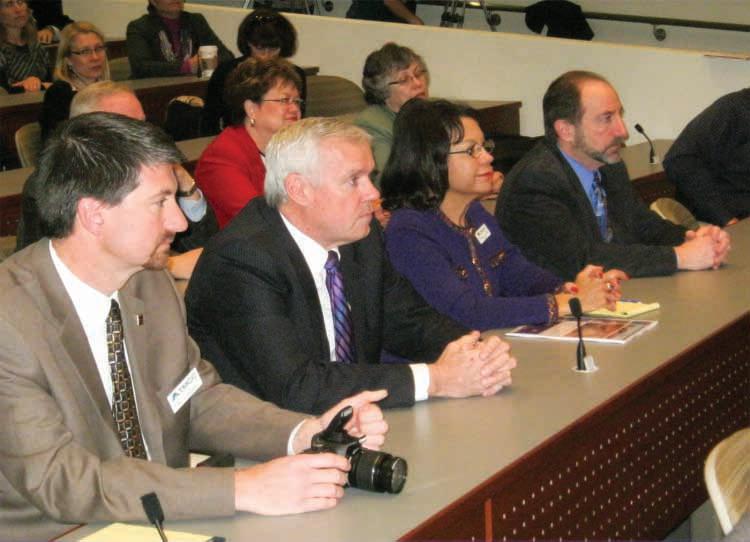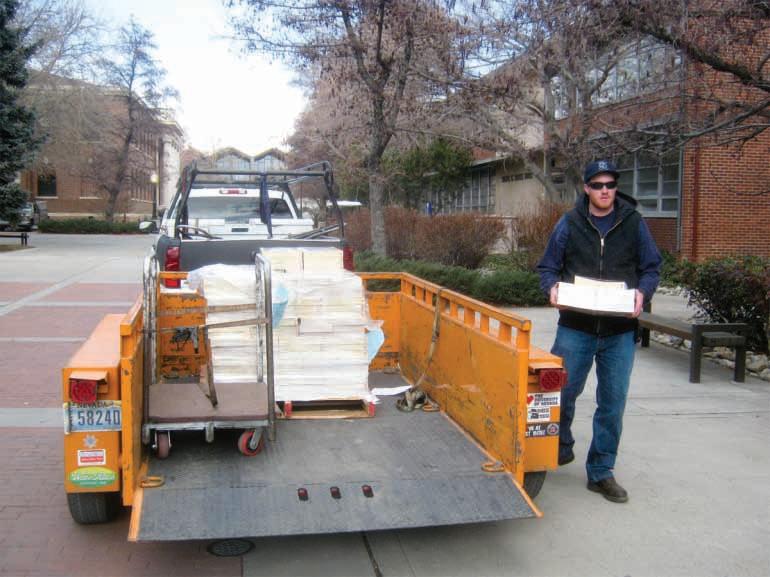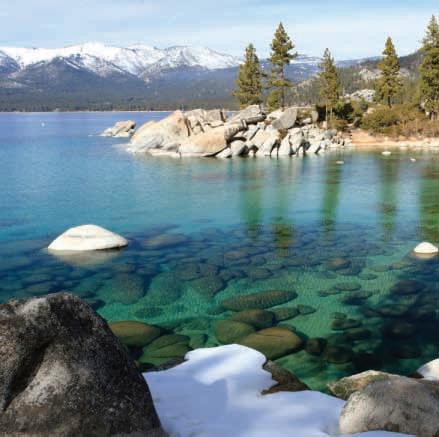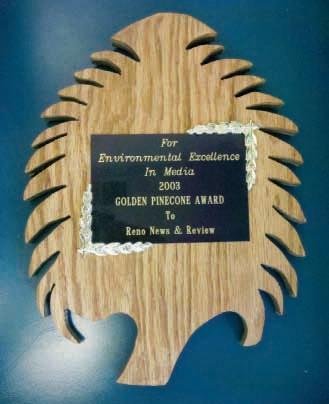
12 minute read
News
from March 7, 2013
Nevada vs. teen pregnancy
Nevada’s teen pregnancy rate has dropped sharply, according to Centers for Disease Control figures. That’s the good news. The bad news is that the state’s rate is still nothing to brag about.
Advertisement
Over a three-year period (2007 to 2010), the state rate of births per 1,000 Nevadans aged 15 to 19 years old dropped by a fourth, from 51.6 to 38.6. In raw numbers, that’s 4,351 to 3,413 births.
That means that out of 51 jurisdictions, Nevada still ranks 12th in the nation. In 2008, it was at 10th (“We’re number 10,” RN&R, May 5, 2011).
Over this period, teen pregnancy declined across the nation, which meant that while Nevada’s rate was dropping, so were other jurisdictions, so Nevada improved its ranking only incrementally. In 2008 the state ranked 10th. The rate fell by at least 8 percent in 47 states and D.C. and by 20 to 29 percent in 16 states, including Nevada.
Dems vs. Heck
The office of U.S. Rep Joe Heck, a Nevada Republican, sent out a news release on Feb. 29 at 9:02 in the morning on his vote in favor of S. 47, the Violence Against Women Act reauthorization. The release contained this statement by Heck:
“As a co-sponsor of this reauthorization last Congress, I was proud to cast a vote in support of this important bipartisan bill that provides crucial funding for programs, organizations and law enforcement agencies in southern Nevada that assist women who are victims of domestic abuse. This bill increases resources for criminal investigations, strengthens penalties against abusers to better protect victims, and funds programs that protect victims from both the physical and mental scars of domestic abuse, sexual assault, and rape.”
Twenty-six minutes later this statement arrived from the Nevada Democratic Party:
“After insulting Gabrielle Giffords by agreeing with a right-wing radio host who called her a ‘prop’ of proponents of reducing gun violence, Joe Heck is clearly afraid of the damage his slap in the face to Nevada women has done to his reelection chances. The fact remains, Joe Heck voted last year to weaken the Violence Against Women Act and to criminalize abortion for rape victims. Nevada women have seen over the last few weeks Joe Heck’s cavalier attitude towards violence against women and today’s vote will not fool them.”
The Giffords reference deals with a Feb. 19 Heck appearance on an Alan Stock program. Stock claimed Giffords had been used as a “prop” by gun control advocates at the state of the union speech. Giffords “can’t even clap her hands,” Stock said. “I think that is just a shameful act by putting her up there as a prop. I’m sorry, I really did.”
Heck responded, “I agree. In the cloud of emotion that’s surrounding the unfortunate incident in Connecticut—that those that are anti-gun want to use that as their opportunity to try to limit our Second Amendment rights.”
Heck later backed away from his comments in an interview with southern Nevada columnist Jon Ralston. “Of course, there is no way that I think that Gabby Giffords is a prop. ... Should I have come to her defense?” Heck said. “You know, in a fast-moving interview, in retrospect, I should have said something, but I didn’t. I was just looking to get past that and talk about gun control in general.”
—Dennis Myers
Doing it on the cheap
Economic development crawls along
Two years ago, a month before the 2011 Nevada Legislature went into session, a by conference in Las Vegas looked at Dennis Myers the state’s battered economy. It was supposed to be a learning occasion, though it was marked by the traditional state chauvinism and boosterism. For instance, a prospectus for the conference read in part, “For years, Nevadans have understood the need to diversify the state’s economy beyond tourism, construction and mining”—though, in fact, there was substantial doubt that Nevada residents understood any such thing.
Dan Klaich nevada higher education chancellor
For those who were listening, the conference offered a lot of wisdom. Economic experts from other Western states—Arizona, Colorado, Texas, Utah—talked about how they had diversified and expanded their economies while Nevadans shrank theirs. Those states used public works like new airports, some incentives, and especially education at all levels—elementary and secondary schools for some economic development purposes, higher education for others.
But the Nevada Legislature that went into session the next month, with Gov. Sandoval’s tax veto threat hanging over like a sword of Damocles, adopted little more than a maintenance budget. Toward the end of its session, the Nevada Economic Forum—which produces binding estimates of the state’s anticipated revenue—predicted somewhat higher revenue than previously expected. Gov. Brian Sandoval recommended nearly all of it, $242 million, be used by elementary and secondary education, leaving higher ed with about $20 million. The state’s campuses were still left with major cuts and shutdowns—and that came on top of the previous four years of the governorship of Jim Gibbons, when the lawmakers went along with decimating the higher education system. Never in the computer era had Nevada been less able to compete in economic development. Commitment of state revenues to education was far below the national average. “And I just don’t see how we are full partners in that at the same time when we’re cutting $162 million out of our budget,” Nevada higher education chancellor Dan Klaich said during the 2011 legislature.
As the 2013 legislature neared, while there was still an awareness in elite circles that the state needed to repair its education system, little had been done to educate the public
In February last year, Nevada higher education chancellor Dan Klaich (second from left) listened closely as Gov. Brian Sandoval offered an economic development plan. Sandoval’s veto threat on taxes has limited legislative action on economic development.
to that need. In the fall of last year, NBC News could report, “Many other students in Nevada, however, are giving up. In this world-famous gaming capital, the odds are stacked against them. Just 36 percent earn their four-year degrees within even six years, a smaller proportion than in any state except Alaska. And as tuition rises, enrollment has been falling. That, accompanied by an exodus of college-educated workers, has further shrunk the proportion of 25- to 34-year-olds in this state with degrees, already the lowest in the country.” The boosterish in-state news coverage aimed at locals could not combat that kind of message going out to the rest of the nation.
There seems to be little reason to expect substantial change in higher education spending. Democratic lawmakers announced an ambitious education program but were unable to answer the first question asked about it: How will you pay for it?
Once again, out-of-state news coverage of public relations tricks to make up for actual resources seems more insightful than local reports. Sacramento Business Journal: “If at first you don’t succeed at luring California businesses to a no-tax state, try again after re-branding and partnering with a friend of Google’s. ... The Nevada Regional Development Authority is attempting to up its tech street cred with an announcement Tuesday that the group will now be known as the ‘Las Vegas Global Economic Alliance’ and has moved into a new office called ‘The InNEVation Center’.”
Since the Nevada Legislature meets only every other year, each time the lawmakers and governor adopt a maintenance program, the state loses another two years while adjoining states keep moving ahead.
In 2008, an Arizona think tank warned that state that it was in danger of becoming “an uncompetitive, unsustainable place where the standard of living stagnates or declines and the position of Arizona tumbles from its historic attractiveness to undesirable.” Every year since then Arizona officials have beefed up the state’s competitiveness.
Even more notable was Utah, where in 2005 and 2006 business leaders became alarmed by rising bankruptcies and falling wages, which meant falling taxes and declines in education and public works funding, portending a decline in Utah’s attractiveness to business. Before that trend could get traction, the state responded by throwing $179 million at higher
education systems to lure teams of world class instructors and researchers and later imposing a 5 percent corporate tax. It’s called the Utah Science Technology Research Initiative (USTAR). The results have been very good. Dozens of distinguished engineers and scientists are now Utah-based. With USTAR support, numerous companies were created and patents generated (“USTAR,” RN&R, July 12, 2012). “In fact, Utah is proving to be a draw for a number of big corporate players these days,” Business Week reported last year. “Procter & Gamble chose the state when opening its first U.S. plant in more than four decades last year. ”
Wyoming, Idaho, New Mexico, Colorado, Montana and Arizona adopted Utah-style techniques, but though Nevada officials have been briefed on the Utah techniques at least twice, Nevada did not. Two more years went by.
Nevada has not stood still. The 2011 legislature created a “Knowledge Fund” to direct funding to academic research with commercial applications—but put no money in it. The lawmakers also changed the administrative structure of the state economic development program.
It was anticipated that the private sector would be asked to contribute to the Knowledge Fund, but businesses were not going to invest if state government didn’t. Or, as Chancellor Klaich said more tactfully, “When the Knowledge Fund was set up it was specifically anticipated that there could be private donations to it and that subject has been generally discussed within the [higher education] system. I would not say that there has been a concerted effort yet as I think it is appropriate that the State commit before private donors or business could be expected essentially to match that State appropriation.”
Two more years went by.
In the current legislature, Gov. Sandoval has recommended $10 million for the Knowledge Fund for the next two years. That is less than Utah has spent annually since its USTAR program began, and there is no start-up money equivalent to what Utah ponied up. The lawmakers are expected to provide more than Sandoval recommended, but even if they doubled it—as the Democrats want—it would still leave the state playing catch-up with its small state competitors in the West.
All this leaves the state highereducation system, by most indices, well below where it was a decade ago. Since the Gibbons administration, the legislature has been satisfied with not damaging the system any more, but rebuilding to get the system back to competitive seems as far out of reach as ever. Ω
Late call
A worker at the University of Nevada, Reno distributes new telephone directories to campus offices. The directory came out in November. When asked about the delay, a university spokesperson responded, “I only received my new phone book at home within the past month.”

100% 100%




college tuition college tuition

• action and adventure • career training • part time service full time benefits • right here in your home town!






For more info contact: SFC Johnny Oliveira Call or Text 775-560-0672


NEW EXHIBIT





In the clear
Despite an abundance of invasive fish threatening to cloud Lake Tahoe’s waters (“Full of carp,” Feb. 28), the lake’s water clarity improved for the second year in a row. Last year, the clarity reading for the lake was 75.3 feet; in 2011, clarity was at 68.9 feet. Before that, clarity had been declining from 2008, reaching a low point of 64.4 feet in 2010. The highest clarity level in the past 12 years was in 2002, which had a clarity reading of 78 feet. While 2012’s numbers improved, researchers at the University of California, Davis Tahoe Environmental Research Center say that the trends still indicate a decline in clarity during the summer months. But the researchers say that the overall improvement is encouraging.
Several factors impact lake clarity, including runoff of urban stormwater. Heavy runoff from snowmelt during the winter and spring seasons carries “small, inorganic particles from the land, roads and other developed areas into the lake,” according to a statement from University of California, Davis.
A Secchi disk, a 10-inch white disk, is used to measure clarity when it is lowered into the water. This method has been used since the late 1960s, when the average clarity depth was 102.4 feet. For an archive of Secchi data from 1968, visit http://terc.ucdavis.edu/research/SecchiData.pdf.
Burn notice
As of Feb. 28, the burning color code season was over. The Washoe County Health District Air Quality Management Division’s Know the Code program, which advises on air quality for wood burning based on a system of colors, lasts from mid-fall to late winter. Green means that residents can light stoves, fireplaces and other wood burning activities; yellow is a “voluntary no burn” and red is a “mandatory no burn” code. This January had the highest amount of yellow code days, with December 2011 close behind.
“In particular, January’s stagnant weather conditions contributed to cold temperatures, calm winds and elevated find particulate matter concentrations,” according to a statement from the Washoe County Health District.
While the color code program is over for the time being, residents can still find out about the region’s air quality at www.ourcleanair.com. The program will start again in November. —Sage Leehey

ECO-EVENT
The 2013 Golden Pinecone awards, which honors local environmental leaders, will be held on March 28. This year’s ceremony will take place at the Peppermill Resort Casino. Tickets are $40 for the first 100 registrants; after that, tickets are $50. To register, visit http://greenupnow.biz/golden-pinecone.
Visit www.facebook.com/RNRGreen for more.










